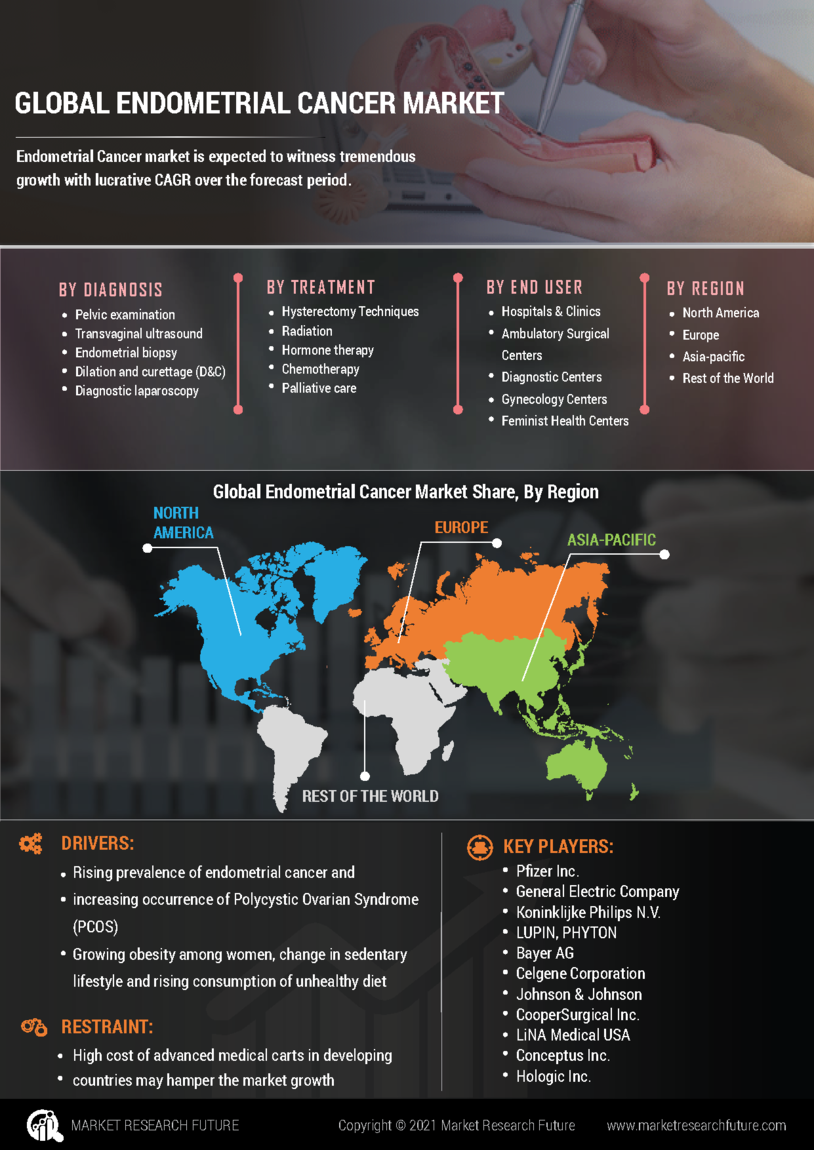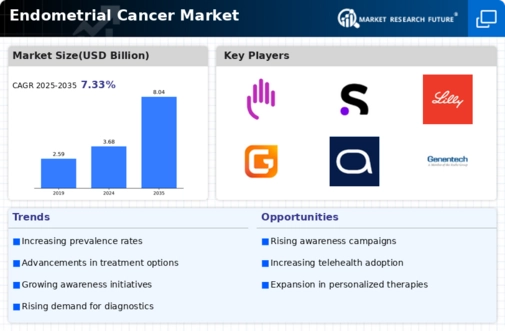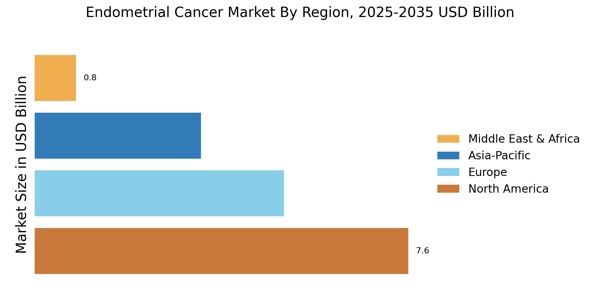Emergence of Targeted Therapies
The emergence of targeted therapies is transforming the treatment landscape within the Endometrial Cancer Market. These therapies, designed to specifically target cancer cells while sparing healthy tissue, are gaining popularity due to their potential for improved efficacy and reduced side effects. Recent developments in immunotherapy and hormone therapy have shown promise in treating endometrial cancer, leading to increased interest from both clinicians and patients. As clinical trials continue to demonstrate the effectiveness of these targeted approaches, the market is likely to witness a surge in the adoption of such therapies. This shift towards personalized treatment options is expected to enhance patient outcomes and drive growth in the Endometrial Cancer Market. The focus on targeted therapies represents a significant advancement in the fight against endometrial cancer.
Increased Funding for Cancer Research
The Endometrial Cancer Market is experiencing a boost due to increased funding for cancer research. Governments and private organizations are allocating substantial resources to understand the underlying mechanisms of endometrial cancer and to develop novel therapeutic strategies. For example, the National Cancer Institute has significantly increased its budget for cancer research initiatives, which includes studies focused on endometrial cancer. This influx of funding is likely to accelerate the pace of clinical trials and the development of new drugs, thereby expanding the treatment options available to patients. As research progresses, the insights gained are expected to lead to breakthroughs in treatment protocols, further driving growth in the Endometrial Cancer Market. The commitment to advancing research is crucial for improving patient outcomes and enhancing the overall landscape of endometrial cancer care.
Advancements in Diagnostic Technologies
Technological advancements in diagnostic tools are significantly influencing the Endometrial Cancer Market. Innovations such as liquid biopsies, advanced imaging techniques, and genetic testing are enhancing the accuracy and speed of diagnosis. For instance, the introduction of next-generation sequencing has enabled the identification of specific genetic mutations associated with endometrial cancer, facilitating personalized treatment approaches. As these technologies become more accessible, healthcare providers are likely to adopt them, leading to earlier detection and improved patient outcomes. This shift not only enhances the quality of care but also stimulates market growth by increasing the demand for diagnostic services and related products within the Endometrial Cancer Market. The integration of these advanced technologies is expected to reshape the landscape of endometrial cancer management.
Growing Incidence of Endometrial Cancer
The rising incidence of endometrial cancer is a pivotal driver for the Endometrial Cancer Market. Recent statistics indicate that the number of diagnosed cases has been steadily increasing, with estimates suggesting that approximately 66,570 new cases will be diagnosed in the United States in 2025 alone. This alarming trend is attributed to various factors, including an aging population and lifestyle changes. As awareness of the disease grows, more women are seeking medical attention, leading to an uptick in screening and diagnostic procedures. Consequently, this surge in cases is likely to propel demand for innovative treatment options and therapies, thereby expanding the Endometrial Cancer Market. The need for effective management strategies and advanced therapeutic solutions is becoming increasingly critical as the prevalence of this malignancy continues to rise.
Rising Awareness and Education Initiatives
Rising awareness and education initiatives regarding endometrial cancer are playing a crucial role in shaping the Endometrial Cancer Market. Campaigns aimed at educating women about the symptoms, risk factors, and importance of early detection are gaining traction. Organizations and healthcare providers are increasingly focusing on outreach programs that encourage regular screenings and prompt medical consultations. This heightened awareness is likely to lead to earlier diagnoses, which can significantly improve treatment outcomes. As more women become informed about endometrial cancer, the demand for diagnostic and therapeutic services is expected to rise, thereby stimulating growth in the Endometrial Cancer Market. The emphasis on education and awareness is essential for fostering a proactive approach to women's health.


















Leave a Comment